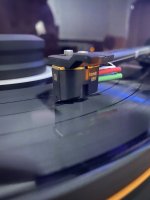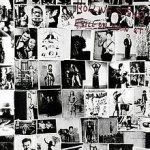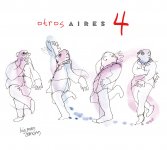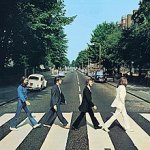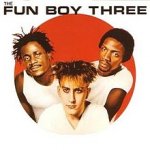Microline Stylus
For those who want to skip the “why” of why the Microline stylus is my favorite, let me say it is quiet in the groove. It has very low groove noise and reduces surface noise on less than perfect discs. It also tracks very well, and due to the advanced stylus shape, it has the most contact area of any commonly available stylus profile, and will contact the grooves at places that are untouched by more basic styli like conical/spherical or elliptical. This is a boon for those who regularly crate dig for decades old records: Once the record has been cleaned (preferably with a vacuum system) Microline styli can produce shockingly good results, as the stylus is tracking “fresh” parts of the groove that have been untouched by previous styli.
Why is this? Warning- Math and Physics ahead. A conical and an elliptical stylus only contact the grooves at two pinpoints. This puts extra pressure on the grooves at these two points, and cause the stylus to wear at these two points. That’s not to say that you will cause reduced record life by using either one- I contend that abrasion by playing dirty records causes more wear to both the record and the stylus than using more basic styli profiles. Moving up the totem pole, one will find Line Contact, Shibata and Microline styli, and that’s the pecking order, with Microline being King. As you move up, stylus life increases and record wear decreases. Distortion decreases as well. In doing research for this review, I’ve found data that suggests that distortion decreases as much as 40 percent when moving to a Microline from a Line Contact. This is because the contact patch is wider on the Microline, the stylus is coming into contact with the grooves over a greater area. Contact pressure is lower as the stylus profile becomes more advanced- closer to that of the stylus that originally cut the lacquer during the manufacturing process.
Pay attention to this, as one major manufacturer charges much more for a cartridge with a Line Contact stylus as opposed to a Microline- and this within the same series of cartridge. The body is identical, but the stylus differs: pay more (much more) and get less. Caveat emptor. With the Hana M series one gets the best stylus available in this price range. The one outlier to surpass the Microline would be Ortofon’s Replicant stylus, but it isn’t available at double or even triple the price of the Hana.
The only thing I found lacking with the presentation of the MH (and I assume this applies to the entire Hana line) is that there were no instructions or advice regarding stylus cleaning and care. I assume that because they supply a brush and do not sell their own liquid cleaner (as some other manufacturers do) that they do not recommend wet cleaning. Still, some information (or a warning) in the instructions would be a wise idea.
Setup
The Hana MH is easy to install, and a good match for the arm on my MoFi Ultradeck. Tracking force was set at the recommended 2 grams with a digital gauge. VTA was set carefully- it is correct with both the head shell and the bottom of the cartridge body parallel to the record. While it works fine at 40dB gain (a common value for many MM phono stages) I preferred 46 dB, which gave quieter cut albums some extra gusto- Paul McCartney’s “Thrillington” and Loreena McKennitt’s “Book of Secrets” come immediately to mind. The McKennitt record should really have been spread across two discs- 53 minutes of full range dynamic music crammed across two sides necessitated cutting the album at a lower than normal amplitude. Alignment was achieved via my trusty MoFi GeoDisc- I’ve used the same one for over 3 decades.
A word on azimuth. I’m super picky about this adjustment. Looking from the front of the cartridge (actually you want to see the stylus tip with a jeweler’s loupe or even better a USB microscope) you want the stylus to be straight up and down- perpendicular to the groove, not leaning left or right. If azimuth is off, so is tracking ability and channel balance, which affects stereo separation. The Ultradeck arm has the ability to make this adjustment. Not all arms do. If you see my system in my profile, you’ll notice I have a Jolida FOZ XTR ($379). This neat device allows two things. First, it allows azimuth adjustment to be made electrically- perfect for those who have arms that offer no physical adjustment. Even for those who can make the physical adjustment, it allows for extreme fine tuning. But it does one more thing that is very important- it is basically a crosstalk rejection device. It allows adjustment so that left channel signal doesn’t bleed into the right channel and vice versa. With my Grado Gold3 cartridge, the left channel requires almost no correction, but the right does. There is some crosstalk between the coils inside the cartridge body. With the Hana MH, no correction was necessary whatsoever. This tells me two things: first, my setup is spot on. Second, the Hana MH is manufactured to a very high standard. Electrically, it is perfect.
Math, physics, and electrical flow doesn’t tell us anything about how a cartridge will sound so let’s move forward.
